Daith Piercings: Can They Help with Migraines?
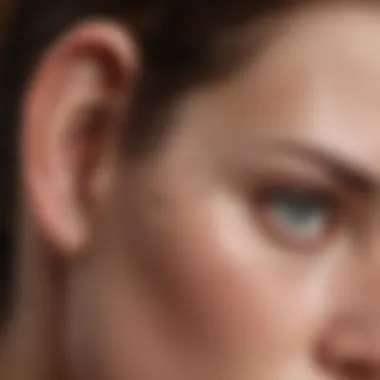
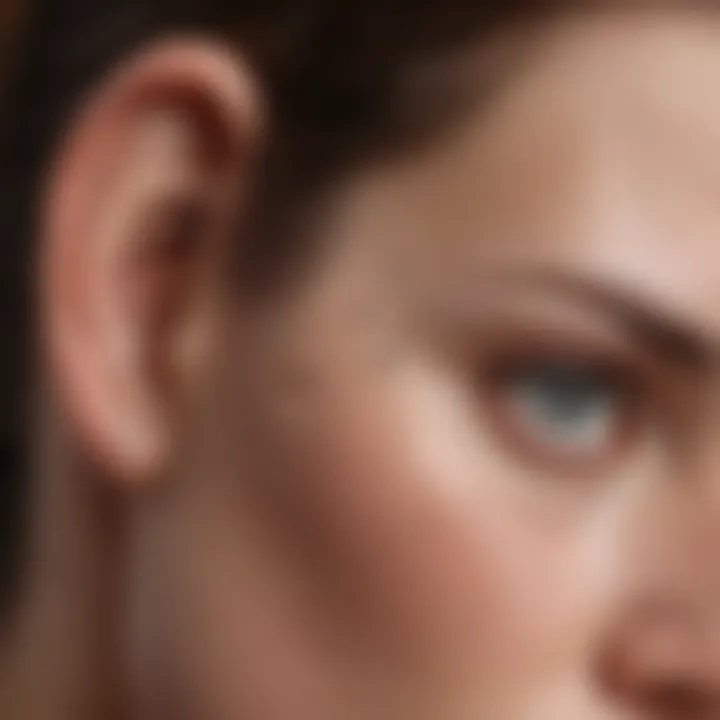
Intro
In recent years, a particular trend has caught the attention of individuals seeking relief from migraines: the daith piercing. This form of body modification, often characterized by its unique placement in the ear, has piqued interest not just for its aesthetic appeal but also for the potential therapeutic benefits it may provide. With this newfound fascination comes a slew of questions regarding its efficacy in alleviating the debilitating symptoms of migraines. Understanding this relationship necessitates a dive into traditional practices, physiological concepts, and personal accounts that surround both acupuncture and daith piercings.
A daith piercing aligns with the location of a specific acupuncture point that, according to proponents, could influence migraine relief through nerve stimulation. By exploring this confluence of fashion—where body art meets holistic health—we aim to scrutinize the claims made by enthusiasts and review the scientific literature surrounding this trendy piercing method.
As people explore alternative approaches to treating migraines, this article seeks to outline the dynamics of daith piercings. From the intricate balance of aesthetics and wellness to the firsthand experiences of individuals who have taken the plunge, we'll cover the essential facets of this approach. Additionally, we’ll discuss significant considerations for potential seekers of daith piercings, including the risks involved and how they might be mitigated.
Whether you're searching for a stylish nod to alternative medicine or are genuinely curious about the effectiveness of this piercing, you’ve come to the right place. We'll navigate these uncharted waters of daith piercings—not just as a fashion statement but as a potential game changer in the realm of migraine relief.
Intro to Daith Piercings and Migraines
Understanding the relationship between daith piercings and migraines can be quite a captivating journey. As more people seek ways to manage migraine symptoms, the daith piercing has emerged as a potential alternative treatment that piques interest among holistic enthusiasts and skeptics alike. This section sets the stage for exploring how daith piercings may provide relief for those afflicted by migraines, delving into the mechanisms at play and the experiences of individuals who have made this decision.
Definition of Daith Piercings
Daith piercings are crafted through a specific area of the ear known as the daith, which is situated in the innermost fold of cartilage. When a needle punctures this region, it allows for the insertion of jewelry, often in the form of a small hoop or stud. Many who opt for this piercing do so for both aesthetic and possible therapeutic reasons.
"Piercings often serve not just beauty but a deeper connection to one's self, sometimes acting as a form of self-expression or relief from life’s discomforts."
The essence of a daith piercing lies not only in its placement but also in its perceived roles, especially in relation to acupuncture principles. The location is thought to correspond to specific points in the body, which can influence pain perception and emotional well-being. Thus, individuals seek out this form of body modification hoping for more than just a stylish look; they aim for migraine relief that could be as transformative as it is decorative.
Understanding Migraines
Migraines are not your average headache; they are complex neurological events that can manifest in a bewildering array of symptoms. Common descriptions of a migraine include intense throbbing or pulsing pain, often localized to one side of the head. This pain can be accompanied by nausea, sensitivity to light, or sound. Symptoms can range anywhere from moderate to debilitating, often interfering with daily activities.
The medical community recognizes various triggers—stress, hormonal changes, certain foods, environmental factors, and even specific scents. Understanding these triggers is essential because they can help individuals anticipate when a migraine is about to strike.
Additionally, migraines have a significant economic impact. According to studies, they can lead to absenteeism and decreased productivity, costing businesses billions annually. Thus, exploring alternatives like daith piercings may not only bring relief to sufferers but also contribute to broader discussions on effective migraine management strategies.
In summary, as we move forward in this article, the exploration of daith piercings and their role in alleviating migraine symptoms embodies a blend of ancient practices with modern needs. This is more than just a matter of fashion; it may hold keys to understanding pain and its myriad expressions in our lives.
Historical Context of Piercings in Alternative Medicine
The practice of body piercings is often intertwined with cultural rituals and alternative medicine around the globe. In many societies, ear piercings have transcended mere aesthetic appeal and woven themselves into the fabric of healing practices. This aspect is particularly crucial when discussing daith piercings, as it provides a backdrop against which the contemporary interpretations of such procedures can be understood.
Historically, piercings, especially in the ear area, have been linked to ancient healing rituals. Various cultures believed that specific points on the ear held the key to managing various ailments. These beliefs paved the way for practices such as acupuncture, which formalizes the relationship between the body’s structure and its energetic flow. By exploring this historical context, we garner insight into how piercing not only serves decorative purposes but also acts as a form of therapeutic intervention.
Cultural Significance of Ear Piercings
Ear piercing is not a modern phenomenon; it has roots that stretch back thousands of years. Across many cultures, earlobes were and are considered sacred spaces. They symbolize a rite of passage, signify cultural identity, or are even seen as talismans of protection. The use of ear piercings for purported health benefits signals a conscious bridge between tradition and modernity.
Some examples include:
- Traditional healing: In certain indigenous cultures, practitioners used piercings in conjunction with herbal remedies to alleviate discomfort.
- Cultural rituals: For instance, in South Indian traditions, girls undergo ear piercing as part of their coming-of-age ceremonies, which are steeped in spiritual significance.
- Fashion and symbolism: The evolution of ear piercings into fashion statements simultaneously reflects societal values, individual expression, and communal identity.
This cultural layering adds depth to the contemporary discourse on daith piercings as a method for migraine relief, suggesting that such practices carry historical weight beyond their cosmetic value.
Acupuncture and Its Principles
The principles of acupuncture can be traced back over 2,500 years, originating in ancient China. Acupuncture operates on the premise that energy, known as "Qi," flows through the body along pathways called meridians. Any blockage or imbalance in this flow can lead to various symptoms or discomforts.
The daith piercing interestingly positions itself within this theoretical framework, aligning closely with specific acupuncture points thought to influence the nervous system and, consequently, pain perception.
Key points include:
- Meridian pathways: Each outer ear region corresponds to different parts of the body, represented in acupuncture. This spatial awareness has made ear acupuncture a targeted approach in treating ailments.
- Pain relief: Practitioners use acupuncture effectively for conditions like migraines, further feeding the narrative that daith piercings may hold similar properties.
- Holistic view: The holistic perspective encompasses physical, emotional, and spiritual health, reinforcing that treatments like daith piercings may be as much about energetic balance as about pain management.
Understanding these connections can help those curious about daith piercings navigate their potential efficacy while also considering personal motivations connected to culture and history. Furthermore, it serves as an anchor for discussing why people might turn to seemingly unconventional solutions in the quest for migraine relief.
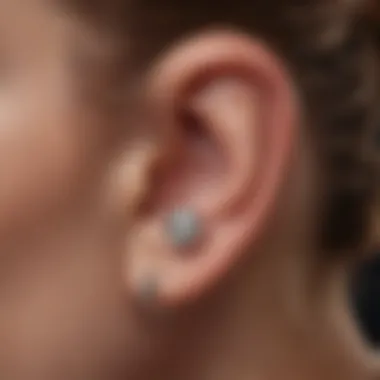
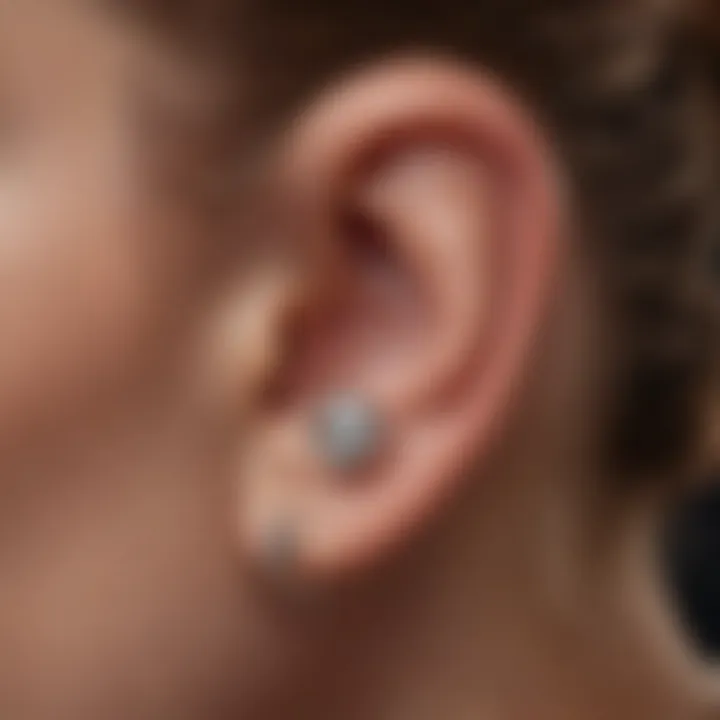
"The ear is a mirror that reflects the entire body. By stimulating specific points, we address not only local symptoms but holistic issues."
The Mechanism Behind Daith Piercings and Pain Relief
Understanding how daith piercings may help with pain relief is essential for those considering this alternative method for managing migraines. This section will delve into two critical aspects: trigger points and pain management, alongside neurological theories. By dissecting the physiological processes involved, we can better appreciate the potential of this piercing as a therapeutic approach.
Trigger Points and Pain Management
One way to grasp how daith piercings might alleviate migraine symptoms is through the lens of trigger points. Trigger points are specific areas in the body that can cause pain when pressed or manipulated. The daith area, situated in the ear, corresponds with several pressure points traditionally linked to acupuncture. When you pierce the daith, it can stimulate these points and, in theory, help to manage pain.
- Localized Effects: The pierce itself might trigger an immediate response in surrounding tissues, possibly leading to a natural release of endorphins, the body’s built-in pain relievers. These compounds can provide a sense of relief not just locally in the ear, but throughout the body.
- Long-term Management: Some individuals report a gradual decrease in headache frequency and intensity after undergoing the procedure. It appears that the continued stimulation of the acupuncture points can maintain a state of lowered pain sensitivity over time.
Many who have had daith piercings advocate for their effectiveness. They often describe a reduction in not just migraine intensity, but also in the number of attacks they experience. While these experiences are subjective, they highlight an interesting intersection between body, mind, and pain perception.
Neurological Theories
Neurological theories provide a further layer to our understanding of how daith piercings may play a role in migraine relief.
- Gate Control Theory: This theory posits that our nervous system has a 'gate' mechanism that can either block or allow pain signals to be perceived. By inserting a daith piercing, it may create new pathways that dilute or disrupt these pain signals, effectively closing the gate to migraine pain.
- Neurotransmitter Release: Piercing potentially affects the release of certain neurotransmitters that are crucial in pain perception. Dopamine and serotonin, known for improving mood and reducing the sensation of pain, may be influenced in a way that diminishes migraines.
According to some neurologists, the action of stimulating specific pathways in the ear might have effects similar to those experienced with acupuncture. The connection between body modulation and pain signaling cannot be overlooked.
These neurological theories underscore the complexity of migraines and suggest that multiple mechanisms might intersect at play when someone opts for a daith piercing. Although more research is required, existing theories provide a foundation for understanding how this alternative treatment could function on a neurological level.
In sum, the mechanism behind daith piercings is multifaceted, involved in both trigger point stimulation and neurological modulation. As we continue to explore this treatment option, acknowledging these layers can guide individuals in making informed choices about their migraine management.
Anecdotal Evidence from Daith Piercing Recipients
Anecdotal evidence holds a unique position in the discussion surrounding daith piercings and their reputed effectiveness in alleviating migraine symptoms. While scientific studies certainly offer valuable insights, personal stories often bring a depth of understanding and authenticity that statistics alone cannot convey. The shared experiences of individuals who have undergone this unconventional procedure can shed light on the varied perceptions of relief and offer comfort to those considering this alternative.
Personal Accounts and Testimonials
The personal narratives from daith piercing recipients provide a rich tapestry of experiences, often characterized by a mix of skepticism and hope. For many, the decision to get a daith piercing is rooted in a history of struggles with chronic migraines that have not responded well to traditional treatments. These individuals often speak about their journeys over various social media platforms, capturing both the agony of their migraine episodes and the emotional weight that comes with them.
One recipient recounts how they had tried countless prescriptions, only to find little relief. "I was at my wit's end. I was ready to try anything," they share. After hearing about daith piercings, they took the plunge. "I felt like I was in a haze for so long, but I woke up one day and realized my headaches were less frequent. I felt a flicker of hope." This kind of anecdotal evidence can be compelling, as it presents a glimpse into the lives of those who have taken risks in pursuit of relief.
Another person affirmed, "I didn’t believe it at first, but it really did seem to help. The pain isn't completely gone, but I can manage it better now. It’s like I'm a different person."
These testimonials are often shared in forums or communities dedicated to migraine support, where individuals feel free to explore holistic alternatives without judgment.
Common Patterns in Relief
When analyzing the anecdotal evidence, common themes emerge among those who have opted for daith piercings. Many report an initial skepticism followed by a range of gradual improvements in their migraine frequency and intensity. Here are some notable patterns:
- Timing of Relief: Some recipients note that pain relief wasn't immediate. Adjustments in migraine patterns took weeks or even months, introducing a layer of patience that can be crucial in managing expectations.
- Contextual Factors: Several testimonials suggest that the perceived efficacy of the piercings could be influenced by factors such as stress, diet, and general wellness. Improved lifestyle choices sometimes coincided with getting the piercing.
- Community Affirmation: There is a sense of solidarity among individuals sharing their experiences. Participants often encourage one another to explore additional holistic methods and self-care practices, framing the daith piercing as part of a larger wellness journey.
The End
In summary, the personal accounts and common patterns derived from anecdotal evidence surrounding daith piercings provide valuable perspectives. They invite readers to reflect on their own experiences while offering a community-driven narrative that often transcends the clinical. This kind of qualitative data is vital in understanding the broader implications of what it means to manage chronic migraine pain emotionally and physically.
Scientific Studies on Daith Piercings and Migraines
The intrigue surrounding daith piercings as a remedy for migraines lies not just in anecdotal reports but in the growing body of scientific inquiry. This section focuses on the emerging studies that explore the potential effectiveness of this unconventional treatment. Understanding these scientific foundations is essential for anyone considering this approach, as it addresses both the credibility and the validity of claims made regarding the efficacy of daith piercings.
Review of Current Research
While stories of migraine relief from daith piercings have proliferated on social media, systematic scientific research is still in its infancy. Most studies relate closely to acupuncture's historical practices, since daith piercings are believed to stimulate similar pressure points. Some interesting lines of inquiry include:
- Pilot Studies: Early investigations have generally focused on a small sample of participants, assessing their pain levels before and after getting a daith piercing. Some of these studies suggest a notable decrease in acute migraine episodes for certain individuals, although variance exists between different subjects.
- Retrospective Analyses: A few studies have analyzed data from users who’ve reported outcomes post-piercing, which adds a form of informal data. These retrospective analyses indicate a mixture of positive and mild results, leading to further questions about participant long-term outcomes.
- Simulation Studies: Research sometimes employs random control trials that simulate the effects of piercings. Over time, these studies often highlight a placebo effect, prompting a more cautious interpretation of results.
Despite emerging research, one notable aspect remains: a robust clinical trial directly focused on daith piercings specifically for migraines has not yet made waves in peer-reviewed journals. A cohesive understanding of how and why daith piercings may work as a relief measure is still essential to solidifying claims made by advocates.


Limitations and Gaps in Studies
As with any ongoing research, it's vital to consider limitations and gaps that pertain to daith piercings' effects on migraines:
- Sample Sizes: Many studies conducted so far have involved small groups, limiting the strength of the conclusions that can be drawn. A large-scale study with diverse demographics is essential for obtaining comprehensive results.
- Control Groups: There’s a scarcity of rigorous control groups that adequately compare placebo situations versus actual piercings across varied population segments.
- Subjectivity in Reports: Pain relief is inherently subjective. Participants’ self-reported outcomes may vary greatly, creating inconsistencies in data interpretation.
- Lack of Long-Term Studies: Many investigations do not consider the long-term effects of daith piercings, such as potential complications due to infection or healing. This absence raises questions on how pain relief persists over time.
"The nuances of what makes daith piercings effective or not is crucial to understanding the real implications for migraine sufferers."
In summation, while scientific inquiry into daith piercings as a treatment for migraines holds promise, it’s clear that there’s a lot more ground to cover. The studies conducted so far serve as a stepping stone, setting the stage for more extensive, thorough investigations to clarify the nuances behind this intriguing phenomenon.
Possibility of Other Treatment Alternatives
Acupuncture vs. Daith Piercing
Acupuncture has been employed for centuries as a means to alleviate various health issues, including migraines. This ancient practice involves inserting fine needles into specific points on the body to influence the flow of energy, known as qi. In this context, it’s crucial to examine how acupuncture stacks up against daith piercings.
- Treatment Techniques:
- Results and Evidence:
- acupuncture targets a multitude of pressure points, which may provide broader symptom relief
- daith piercings can act as a permanent stimulus to a specific acupuncture point, potentially leading to constant relief
- Acupuncture: A number of research studies have backed up its efficacy in reducing the frequency and severity of migraines. Many patients report significant improvements following a series of sessions.
- Daith Piercing: On the other hand, while some individuals swear by their piercings, the scientific backing is comparatively sparse. Anecdotal evidence suggests varying outcomes.
In essence, individuals may consider acupuncture as a more traditional and medically validated option while recognizing that daith piercings could serve as a complementary option for those intrigued by a more contemporary approach.
Other Holistic Approaches
Aside from acupuncture and daith piercings, several holistic methods deserve a mention. These alternatives can provide a gentler, all-natural approach to migraine relief:
- Herbal Remedies: Some individuals have found success using supplements like butterbur or feverfew. These herbal options are said to reduce the frequency of migraine attacks without the side effects often associated with pharmaceutical treatments.
- Yoga and Meditation: Mindfulness and yoga can lead to significant stress reduction, often a key trigger for migraines. Many practitioners believe that focusing on breath work can ease tension and improve overall mental clarity.
- Diet Modification: Identifying and eliminating trigger foods can be invaluable. Common culprits include aged cheeses, processed meats, and certain preservatives. Keeping a detailed food diary often helps individuals pinpoint these triggers.
- Massage Therapy:
Regular massages focusing on the neck, shoulders, and head can alleviate tension buildup which might play a role in migraine onset.
Ultimately, the possibility of exploring these alternatives alongside or instead of daith piercing empowers individuals to make informed decisions.
Holistic approaches often focus on the entire individual rather than isolated symptoms, which may appeal to those seeking a more comprehensive way of managing their health and well-being.
Risks and Considerations of Daith Piercings
Understanding the risks and considerations associated with daith piercings goes beyond mere aesthetics. It’s important for those contemplating this option for migraine relief to weigh potential downsides against the benefits. As with any body modification, daith piercings come with their own set of complications which can include infections, allergies, and healing challenges. Awareness in these areas can help individuals make informed decisions, avoiding unnecessary discomfort or health issues.
Infection and Healing Issues
Infections are perhaps the most frequently discussed consequences of body piercings. When an individual opts for a daith piercing, the process introduces a foreign object into the body, and while typically harmless, it can offer a gateway for bacteria. Piercing guns—or needles if the more traditional route is taken—can lead to complications if proper aftercare isn't followed diligently.
Common signs of infection:
- Increased redness around the site
- Swelling that doesn’t subside
- Dull, throbbing pain
- Discharge that isn’t clear or slightly cloudy
====> If someone notices these symptoms, seeking medical advice is crucial. Ignoring signs could land the individual in a pickle, possibly requiring antibiotics or additional medical intervention.
Furthermore, each body heals at its own pace. The cartilage where daith piercings are located can sometimes take longer to heal than other areas of the ear. Expect a healing period of six months or more for some people. Proper aftercare involves gentle cleaning with saline solution and avoiding irritants. Rushing into activities like swimming, or using earphones, could very well lead to complications. And let's be honest, nobody wants to be laid up nursing an infection when they could be out enjoying the world.
Potential for Allergic Reactions
Another consideration worth mentioning is allergic reactions to the materials used in the piercing jewelry. While surgical steel or titanium is commonly recommended due to their hypoallergenic properties, that doesn’t mean every person is free from susceptibility. Some individuals might experience localised itching, swelling, or a rash, which can be a sign of a body’s intolerance to a specific metal.
Here’s a few metals known to often cause issues:
- Nickel
- Brass
- Copper
For first-time piercers, it might be wise to inquire about the material composition before getting the daith piercing.
It’s advisable to insist on jewelry that is labeled as hypoallergenic when making this personal choice—alloy sensitivity is an unexpectedly common issue.

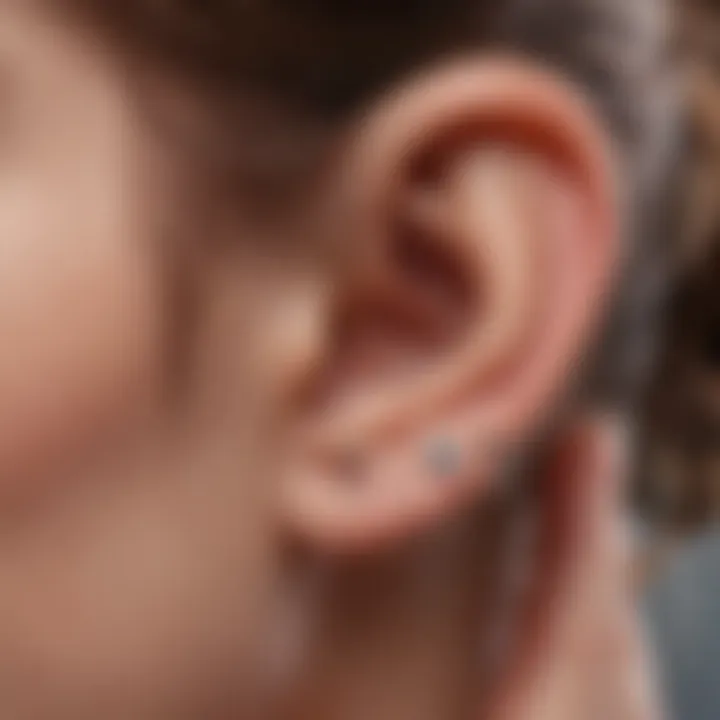
Reactions can extend beyond mere discomfort; they can lead to necessary removal of the jewelry, potentially halting any hoped-for migraine relief at the outset. Thus, a cautious approach in selecting the right piercer and materials is crucial to ensure a smoother journey towards alleviating migraine symptoms.
Expert Opinions on Daith Piercings as Treatment
Understanding the perspectives of various medical and holistic practitioners is vital in evaluating the efficacy of daith piercings as a treatment for migraines. These expert opinions provide a balanced view, presenting not only the potential benefits but also the concerns and considerations tied to this alternative approach. By gathering insights from those in conventional medicine alongside holistic advocates, we can create a richer picture of what daith piercings may offer. Moreover, this dialogue between disciplines underscores an evolving discourse in pain management strategies, inviting readers to make informed decisions based on a variety of expert viewpoints.
Perspectives from Medical Professionals
When it comes to the realm of medical experts, opinions on daith piercings can vary significantly. Many physicians approach the subject with skepticism, grounded in the principles of evidence-based medicine. They might point out that while some individuals report relief from migraines post-piercing, such outcomes may stem from a placebo effect rather than a physiological response to the piercing itself.
Moreover, the anatomical significance of the daith area draws attention. Some doctors explain that the vagus nerve, which is believed to play a role in migraine headaches, runs close to this location in the ear. Thus, they posit that stimulating this nerve via a daith piercing could theoretically influence migraine occurrence. However, there is little rigorous scientific evidence backing this claim. As one doctor succinctly put it, "There's a lot we don't yet know about how such procedures affect the nervous system."
In light of this, many medical professionals emphasize the importance of exploring proven treatment options, such as pharmacological interventions and traditional therapies. They advocate for further research before supporting unconventional treatments. This caution reflects a desire to prioritize patient safety and efficacy above anecdotal successes.
Views from Holistic Practitioners
In contrast to their conventional counterparts, holistic practitioners often embrace daith piercings as a legitimate treatment avenue. They argue that this approach is not merely about aesthetics but rather about harnessing the body's innate healing capabilities. Practitioners may relate daith piercings to acupuncture, which operates on similar principles, suggesting that stimuli in specific areas can promote pain relief and overall wellness.
Holistic experts report a multitude of positive outcomes from their clients who have pursued daith piercings. Many stories emerge, depicting individuals finding significant relief from debilitating migraines following the procedure. Some practitioners assert that the emotional and psychological aspects of migraine management are equally crucial, indicating that the act of undergoing such a personal and visible change can boost an individual's confidence and sense of agency over their health.
The general sentiment among these practitioners is one of open-mindedness and an eagerness to explore different therapeutic modalities. They encourage people struggling with migraines to consider all available options, treating daith piercings as a complementary approach to be used alongside traditional therapies.
"In the realm of health, there's no one-size-fits-all answer. It’s about finding what works best for each individual." - A holistic health practitioner.
The intersection of these expert opinions underscores the complexity surrounding daith piercings as a treatment for migraines. With contrasting views from medical professionals and holistic practitioners, individuals seeking relief are left to navigate the nuanced landscape of treatment options, weighing the insights of both sides.
Continuing Discourse in Medical Communities
The dialogue about the efficacy of daith piercings in relation to migraine relief is far from one-dimensional; it is an ongoing conversation that roves through various spheres of medical communities. This discourse is not merely academic; rather, it encompasses a synthesis of personal experiences, clinical observations, and emerging studies that bring us closer to understanding a controversial and fascinating treatment option for migraines.
The importance of this dialogue lies in its ability to foster an environment where skepticism meets curiosity. In an age where alternative treatments are gaining traction, the importance of discourse cannot be overstated. It prompts medical professionals and holistic practitioners to evaluate these unconventional approaches rigorously, ensuring they measure up to the gold standards of efficacy. This interaction cultivates a better understanding of what works, under what conditions, and for whom.
Emerging Research Initiatives
New research initiatives are sprouting up like wildflowers after a spring rain. Numerous studies are currently underway that seek to quantify the anecdotal success of daith piercings in treating migraines. Grants from health organizations are being allocated toward preliminarily assessments of the physiological mechanisms at play in daith piercings—basically, how does puncturing a specific cartilage area in the ear influence migraine symptoms? The methodologies involve everything from controlled experiments to greater observational studies, which track the frequency and intensity of migraines before and after medication.
However, it’s not just the medical institutions that are participating; grassroots organizations are getting into the fray as well, teaming up with consumer advocacy groups to gather data on patient responses. It’s a collaborative effort that aims to both validate individual experiences and contribute to the larger body of knowledge. Until even the most skeptical healthcare professionals see some concrete data, ongoing research efforts will continue to be vital.
Patient Advocacy and Community Support
Patient advocacy has taken center stage in this evolving conversation. Many individuals battling chronic migraines are voicing their experiences with daith piercings, thereby forming a community rich in shared narratives and mutual support. Conversations often unfold on platforms like Reddit, Facebook, and other social media channels, where users share not just triumphs but also setbacks and uncertainties. This community serves as both a sounding board and a knowledge repository where people can exchange wisdom about the procedure’s effectiveness, healing, and potential side effects.
The collective consciousness of the community also acts as a catalyst for raising awareness in the medical field. When patients come together, their voices become louder, pushing for research funding and a more empathetic approach from healthcare providers. Holistic practitioners, too, often align with these grassroots efforts, offering their insights and experiences, which can further strengthen the validity of personal accounts.
"It's incredible how often our individual stories can shape medical discourse. Just because something isn't mainstream doesn't mean it's ineffective."
As discussions grow around daith piercings’ potential for migraine relief, the convergence of patient voices and ongoing research initiatives creates a fertile ground for transformations in migraine management strategies. The combination of lived experiences and scientific inquiry complements one another, enhancing our understanding of both personal and collective health pathways.
The Ends and Reflections
Understanding the relationship between daith piercings and migraine relief is not just about the piercing itself, but also about the cumulative knowledge gained from various fields of study and practice. Connecting cultural history with modern medical principles, this article serves as a stepping stone, opening up discussions on alternative methods for managing chronic pain, specifically migraines.
Summarizing Key Findings
Throughout this exploration, several key findings stand out:
- Anecdotal Evidence: Many individuals who have opted for a daith piercing report varying degrees of migraine relief, highlighting the subjective nature of pain management. These testimonials paint a picture that while results may not be universal, positive outcomes exist.
- Neurological Insights: The discussion around trigger points and neurological pathways offers a plausible theoretical framework to understand why such piercings might help some migraineurs. It lends credibility to the idea that acupuncture principles, on which the daith piercing is based, may play a role in mitigating migraine triggers.
- Research Limitations: It’s clear the scientific community has yet to reach a consensus. Existing studies often come with contradictions, limitations, and a lack of random control trials to robustly validate anecdotal claims or explore different variables that could affect results.
- Risks and Considerations: Each potential benefit comes with a consideration of risks. From infection possibilities to personal health factors, understanding these can play a significant role in decision-making for prospective piercees.
Looking Ahead to Future Research
The journey of understanding daith piercings and their potential in migraine treatment is still ongoing. Future research could focus on several important areas:
- More Robust Studies: There's a significant need for well-designed clinical studies that could provide clearer data on effectiveness. Randomized controlled trials (RCTs) may provide invaluable insight into whether the perceived benefits are indeed from the piercing itself or merely placebo effect.
- Patient Experiences: More comprehensive surveys encompassing a larger demographic could help in identifying specific patterns and personal experiences surrounding daith piercings and migraine management. Insights into variations across age, gender, and existing migraine profiles can yield valuable data.
- Long-term Effects: Investigating the longevity of the relief experienced by individuals post-piercing could better inform people about what to expect in their journey. Understanding how this treatment might affect individuals over time can guide more realistic expectations for those considering it as an option.
"The willingness to explore new avenues in pain management could lead to innovative solutions and hope for countless individuals."
As we move forward, let's keep an open mind and continue to seek knowledge and understanding, guiding those faced with the debilitating challenge of migraines towards informed choices.



